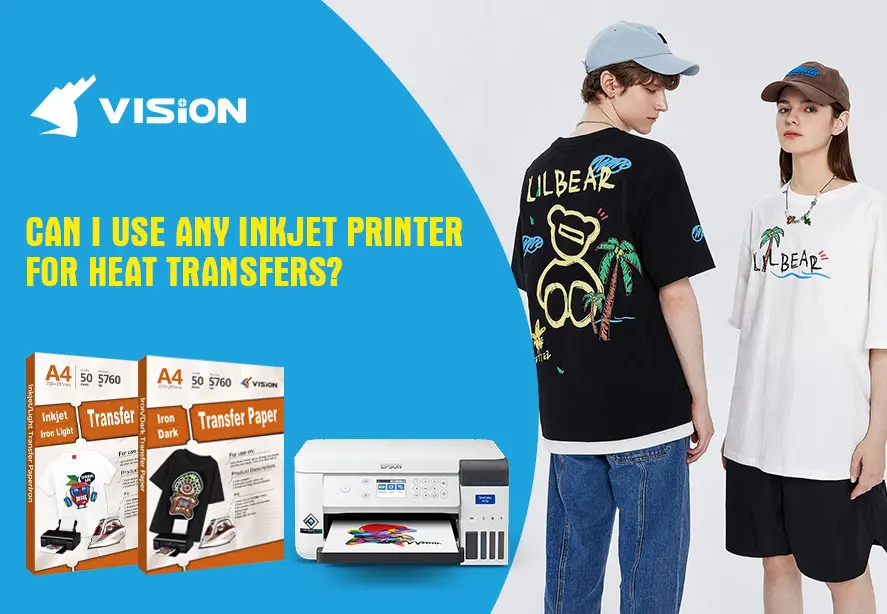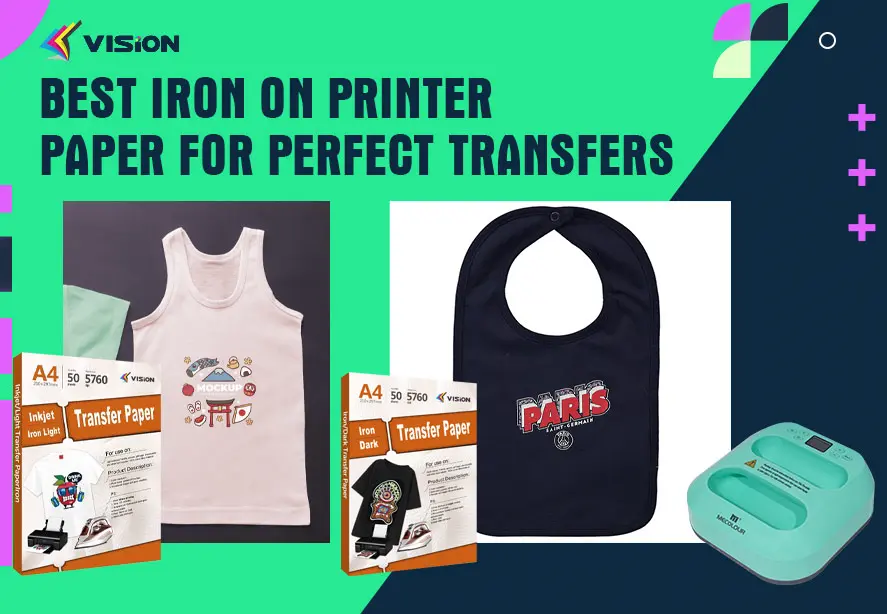What Kind of Ink Do I Need for Heat Transfer Paper?

Whether you are creating custom apparel, home décor, or promotional products, choosing the right ink plays a pivotal role in determining the success of your project. In this guide, we will delve deep into the world of heat transfer inks, exploring the different types available, their advantages, and the best uses for each.
Understanding Heat Transfer Paper and Its Functionality
Before diving into the specifics of ink types, it’s essential to understand the role of heat transfer paper. It is a special type of paper that allows designs to be transferred onto fabric or other surfaces using heat and pressure. When paired with the right ink, heat transfer paper can produce vibrant, durable designs that are both visually striking and long-lasting. The ink you use determines the clarity, color vibrancy, and durability of the print, making the choice of ink critical to your final product.
Types of Ink for Heat Transfer Paper
Choosing the right ink for heat transfer paper depends on several factors, including the fabric you are working with, the type of transfer process (inkjet or laser), and the final effect you wish to achieve. Below, we explore the four main types of inks used in heat transfer printing:
1. Solvent Inks
Solvent inks are a popular choice for heat transfer applications due to their ability to produce vibrant and durable prints. These inks contain solvents that allow them to penetrate the fibers of the fabric, resulting in a long-lasting, high-quality transfer. Solvent inks are often used for industrial-level printing due to their resilience in outdoor conditions, making them ideal for products that will be exposed to the elements.
Best Use: Solvent inks are perfect for outdoor signage, vehicle decals, and hard-to-adhere fabrics such as leather or polyester.
Advantages:
Superior color vibrancy.
Highly durable and weather-resistant.
Ideal for both fabric and non-fabric materials.
Considerations:
Requires ventilation due to the strong chemicals used.
Can be more expensive compared to other inks.
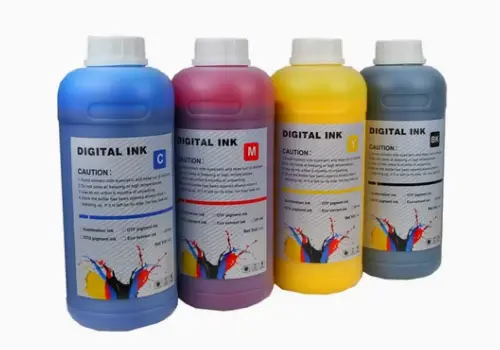
solvent ink
2. Dye-Sublimation Inks
Dye-sublimation ink is one of the most popular ink types for heat transfer printing, especially for polyester fabrics and polyester-coated materials. This ink works by turning into a gas when heated and bonding with the fibers of the fabric, ensuring a long-lasting, vibrant finish. Dye-sublimation prints are known for their smooth finish, making them ideal for creating soft, comfortable apparel.
Best Use: Dye-sublimation ink is primarily used for sportswear, team uniforms, personalized gifts, and photo-quality prints.
Advantages:
Produces bright, vivid colors with excellent image quality.
Inks become part of the fabric, leading to long-lasting prints that won’t peel or crack.
Ideal for light-colored fabrics, especially polyester.
Considerations:
Works best on synthetic fabrics (primarily polyester).
Not suitable for dark-colored materials unless treated or coated.
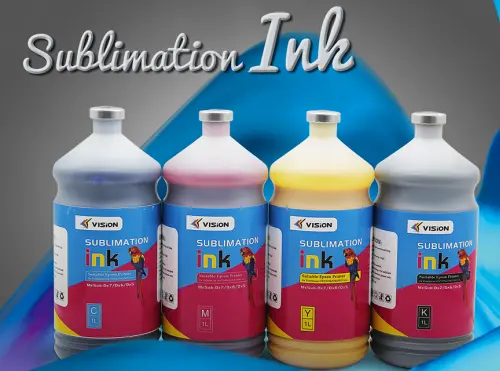
sublimation ink
3. Inkjet Inks
Inkjet inks are commonly used with inkjet printers, which are widely available and relatively affordable. These inks are versatile, allowing you to print on various types of heat transfer paper, such as light or dark transfer papers, making them suitable for a broad range of projects. Inkjet inks typically include dye-based or pigment-based inks, both of which have distinct properties.
Best Use: Inkjet inks are ideal for printing full-color designs, photos, and custom graphics onto fabrics and ceramic surfaces.
Advantages:
Easy to use with affordable equipment.
Versatile and can be used on both light and dark fabrics.
High resolution printing for detailed images.

Inkjet Inks
Considerations:
Pigment-based inks are more durable and water-resistant than dye-based inks.
Dye-based inks tend to fade faster and are less suitable for outdoor use.
Related:
How to choose the ink used for inkjet heat transfer paper, pigment ink or dye ink?
4. Plastisol Inks
Plastisol ink is a widely used ink for screen printing and heat transfer projects. Unlike other inks that soak into the fabric, plastisol inks sit on the surface of the material, resulting in vibrant colors and a slightly raised texture. Plastisol inks are particularly favored for textile printing because they maintain their color over time without significant fading.
Best Use: Plastisol ink is perfect for t-shirts, sweatshirts, and other apparel items. It is also commonly used for custom logos, promotional products, and uniforms.
Advantages:
High opacity, meaning they provide strong, vivid prints even on dark fabrics.
Long-lasting prints that are resistant to wear and washing.
Works well with cotton, polyester, and blended fabrics.
Considerations:
Requires a heat press to cure the ink properly.
Can feel heavier on fabric compared to other ink types.
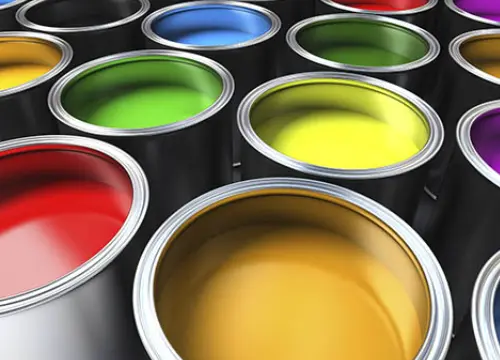
plastisol ink
Factors to Consider When Choosing Ink for Heat Transfer Paper
When selecting the right ink for your heat transfer project, several factors should be taken into account to ensure optimal results. These factors include:
Fabric Type
The fabric you are working with plays a critical role in determining the ideal ink. Polyester fabrics work best with dye-sublimation inks, while cotton fabrics typically pair well with plastisol inks.
Related:
Choosing the Right Transfer Paper for Different T-Shirt Fabrics
Print Quality
Different inks produce varying levels of print quality. For photo-quality prints or vivid colors, dye-sublimation and inkjet inks are often the best options. However, for prints requiring high opacity and durability, plastisol inks are an excellent choice, especially for dark-colored fabrics.
Durability and Washing Resistance
If your designs need to withstand frequent washing and exposure to the elements, choose inks that offer high durability. Solvent inks and plastisol inks tend to have superior wear resistance, while dye-sublimation inks bond with fabric fibers, ensuring long-lasting results without cracking or peeling.
Budget Considerations
While high-quality inks like solvent and dye-sublimation inks may provide exceptional results, they can also be more expensive. If you are working within a tight budget or just starting in the heat transfer business, inkjet inks and plastisol inks may offer more affordable solutions.
Choosing the right ink for heat transfer paper is crucial for ensuring the quality, durability, and vibrancy of your designs. By understanding the different types of inks available—solvent, dye-sublimation, inkjet, and plastisol—and considering factors such as fabric type, print quality, and durability, you can select the perfect ink for your heat transfer projects.





